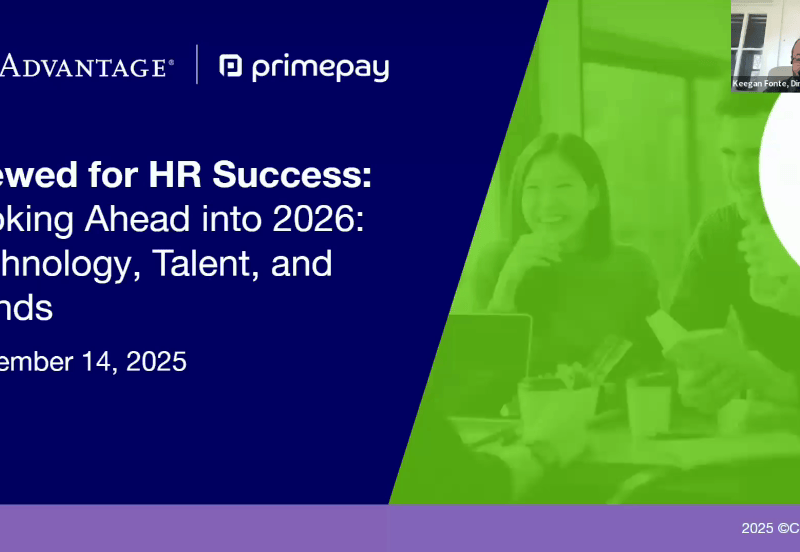A flexible benefit that can be offered by any size employer is the health reimbursement arrangement (HRA), which is a pre-tax account that can be used to pay for qualified medical expenses. An HRA is a self-funded health plan that can only be funded by the employer. No employee salary reductions are permitted.
A traditional HRA must be paired with a group medical plan to satisfy the requirements of health care reform. Employers that do not sponsor a group health plan are not eligible to sponsor this type of HRA.
The beauty of the HRA is that it gives you the ability to control the financial risk. It is also tax-free to employees and tax-deductible for employers. The HRA has the most flexibility of any pre-tax account. As the employer, you choose the amount of the benefit, the eligible expenses for reimbursement, and whether to include a rollover provision.
For example: Let’s say an employer chooses a high deductible health plan with a $2,000 deductible for a single employee, which should allow them to have a lower premium. The employer realizes it is a very high cost for the employees to pay out of pocket, so he decides to open an HRA to help reimburse deductible expenses. To limit the employer’s exposure, the employee will be responsible to pay the first $500 of the deductible and the employer will cover the remaining $1,500.
Although this HRA plan type is the most common, there are six different ways that HRAs can be structured.
Six HRA Plan Types
There are currently six different plan types for HRAs, with two of them being brand new additions:
- An HRA integrated with a group health plan (mentioned above).
- Limited purpose HRA: dental and vision only.
- Retiree HRA.
- Qualified small employer HRA (QSEHRA).
- Individual coverage HRA (ICHRA).
- New HRA option available on Jan. 1, 2020.
- Excepted benefits HRA (EBHRA).
- New HRA option available on Jan. 1, 2020.
A QSEHRA is a useful tool for non-applicable large employers (less than 50 full-time and full-time equivalent employees) to help employees pay for health coverage and out of pocket expenses. Some additional details:
- Employers are only eligible to sponsor a QSEHRA is they do not sponsor any other form of group health plan (including dental or vision) and employees must be enrolled in some form of minimum essential coverage (MEC) to be eligible for reimbursements.
- QSEHRA is limited in 2019 to $5,150 for single only and $10,450 for family coverage.
Two new HRAs that were introduced by the Departments of Health and Human Services (HHS), Labor (DOL), and the Treasury (IRS) on June 13, 2019.
The newest additions: ICHRA & EBHRA
An ICHRA, also known as premium reimbursement HRA, is an alternative to traditional group health plan coverage. Some additional details:
- ICHRAs can be used to reimburse premiums for individual health insurance by employees not offered coverage under an employer group health plan.
- This is useful if an employer offers a group health plan but has an employee class carved out from eligibility under their plan, like part-time or seasonal employees.
- This type of HRA can be used for qualified medical expenses, including individual medical insurance and Medicare premiums.
An EBHRA is the second new alternative to traditional group health plan coverage, subject to certain conditions. Some additional details:
- It allows employees that are eligible for an employer group health plan to be reimbursed up to $1,800 annually pre-tax, even if they don’t enroll in the group health plan.
- This type of HRA can be used for qualified medical expenses, including premiums for vision and dental insurance, COBRA continuation coverage, and in some circumstances short-term, limited-duration insurance (STLDI).
Additional guidance is coming soon from the IRS regarding several outstanding issues, such as a safe harbor for ICHRAs with regards to the Affordable Care Act (ACA) requirements of affordability and minimum value.
HRA: Benefits Process
Since an HRA is 100% employer-funded, the employer is in complete control of the benefit plan offered. For those HRAs integrated with an employer sponsored group health plan, the employer needs to choose the health plan they are willing to offer.
In addition, an employer sponsor of any type of HRA will need to choose the expenses to reimburse, the limit and if participants will be able to rollover money. As participants incur specific expenses, they submit the expenses and get reimbursed directly from the employer.
HRA: Compliance Checklist
What type of compliance measures should you consider with an HRA?
- HRAs must have proper plan documentation in place, including a written plan document and summary plan description distributed to participants.
- HRAs are considered a group health plan and are subject to the reporting and disclosure requirements under ERISA.
- Annual NDT needs to be completed during the plan year. While HRAs are not included in the section 125 testing, HRAs are subject to testing under section 105.
- Virtually all HRAs are going to be COBRA-qualified.
- An employer subject to COBRA must pay attention to ensure that participants experiencing qualifying events are supplied with the proper notices.
- As a self-insured group health plan, HRAs are subject to PCORI fees.
- HRAs will be exempt from PCORI fee requirements if it qualifies as an excepted benefit. An HRA only qualifies as an excepted benefit if either the maximum benefit is not greater than $500 or it only reimburses limited scope benefits (like dental or vision).
- HRAs are subject to some ACA requirements, which include specific Form W-2 reporting, and annual distribution of a summary of benefits and coverage (SBC).
As a reminder, Medicare is the United States’ health insurance program for people age 65 or older. It is a federally funded benefits program that is taxed equally to the employee and employer as payroll deductions.
Let PrimePay Help Your Employees Save
PrimePay can administer pre-tax benefits for your company, including HRAs, HSAs, and FSAs. When you choose PrimePay’s pre-tax benefit plan administration, you receive a dedicated service team, access to our support portal, automated claims processing, and a PrimePay debit card and mobile app.
Please read our disclaimer here.










